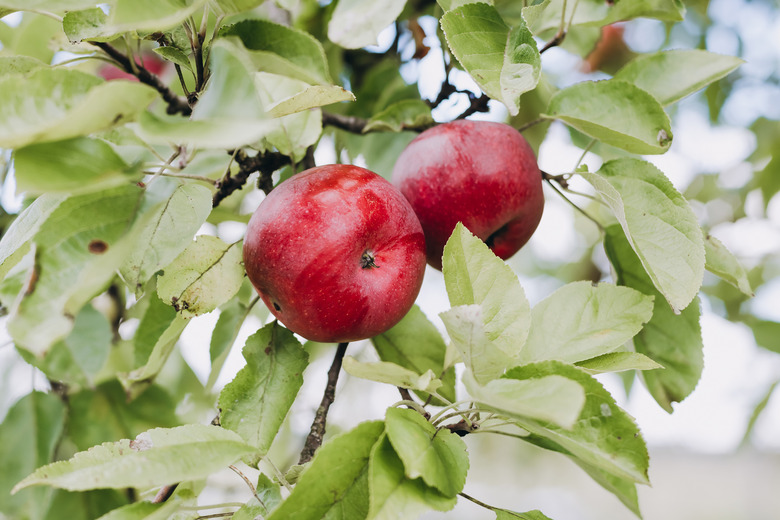Brown Spots On Apples
We may receive a commission on purchases made from links.
Who doesn't love biting into a crisp, colorful apple (Malus pumila)? For apple lovers, it is truly disappointing to discover ugly brown spots on the skin of the fruit. If you grow your own apples, it is even more disappointing because you've lost some of your hard-earned crop. There are many reasons apples get brown spots on their skin. Some are preventable, and some are not.
Brown Spots From Fungal Infections
Brown Spots From Fungal Infections
A variety of fungal diseases can cause brown spots to develop on an apple. Bitter rot is one disease that causes sunken brown spots to form. Flyspeck, another fungal disease, is caused by a sooty fungal infection that causes superficial spots to form on the skin.
Cedar quince rust causes discoloration of the apple's skin as well as brown, spongy areas right under the skin. The fungus responsible for apple scab also causes brown lesions. Black rot, white rot, and sooty blotch are additional fungal diseases that can cause brown spots on apple skin.
Insect Damage on Apples
Insect Damage on Apples
Sometimes, dark spots on apples are caused by insect pests. Tarnished plant bugs feast on the leaves and fruit of the apple tree and can cause corky, discolored spots on the bottom of the apples. Green fruitworms tunnel into apples, and the surrounding areas can turn brown.
San Jose scales, a type of insect, leave behind small spots that look similar to measles. Codling moths burrow into the fruit, marking it with distinct brown spots.
Blemishes Caused by Improper Storage
Blemishes Caused by Improper Storage
Once apples have been picked, they must be stored properly to keep them crisp and free of blemishes. If you store apples at cold temperatures for more than two months, they can begin to "grow" brown spots, a type of discoloration called storage scald. This occurs because the cold temperatures cause oxidative damage, which means the apples are exposed to more oxygen than they can absorb.
Bitter pit is another condition that happens when apples are stored for long periods of time at cold temperatures. It also causes discoloration on the skin of the fruit as well as brown spots on the flesh. Sodium burn occurs when sodium hypochlorite contaminates the apples when they're washed prior to distribution. It can also cause brown spots on the skin.
Preventing Brown Spots on Apples
Preventing Brown Spots on Apples
Keeping apple trees pruned and maintained can help cut down on fungal diseases. Introducing predatory insects, such as parasitic wasps, into your yard is one way to help control insect pests that cause brown spots. Pheromone traps can also destroy insect pests.
Insecticides can be useful as well if used appropriately and in moderation. For example, acetamiprid can kill several insect pests on apple trees, and it's ready to use from the spray container in which you purchase it. Wait at least seven days to harvest the apples after applying the insecticide and 12 days to reapply the insecticide.
Finally, you can prevent brown spots by eating apples quickly. Eating apples within a week or two of purchase or harvest will make spots from cold storage less likely.
